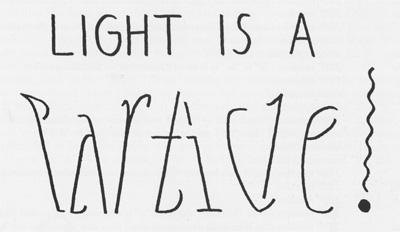Chapter 5 – Applications of the Elemental Cycle
Discussion of Example Applications
The Nature of Light
The advent of quantum mechanics brought startling realizations about the nature of light. Depending upon the way in which an experiment is carried out, physicists could seemingly change the way that reality manifested. In other words, when physicists set up an experiment in which detectors are used which are sensitive to the particle-nature of light, then particles of light are detected, such as dots on a photographic plate. If detectors that are sensitive to the wave nature of light are used, then waves are detected, such as in an interference pattern on a screen. If turns out to be impossible to successfully set up an experiment in which both types of detectors are used simultaneously – the extent to which we gain certainty about the particulate nature of light in an experiment is related to the level of uncertainty we have about its wave nature. We seem to get one or the other types of behavior but not both simultaneously.
The particulate nature of light is Earth in this case: when light manifests in this way its photons are uniquely located, producing a single dot on the photographic plate. The wave nature of light is its Water nature. This is a direct analogy, as the waves of electromagnetic radiation literally display wave behavior – interference, diffraction, reflection, etc. The Air aspect of light is the strange polarity of its behavior, where it will oscillate along the scale of particle-nature and wave-nature depending upon the context of the experiment. Indeed, this aspect of the behavior of light has been identified in the formulation of quantum mechanics by Neils Bohr the “complementarity principle”.
Yet the very reciprocation between the forms in which light manifests gives us a hint as to its Fire nature. There is something that manifests as light – it can take on a variety of proscribed forms, but somehow the light itself is not either particulate or wave-like in nature. Nor is it particulate and wave-like in nature. Rather, it is singular in and of itself – light qua light is not accurately describable with the terms particle or wave at all, but is rather like the metal out of which two seemingly opposing sides of a coin is made. The coin itself is singular, but in any given coin toss you can only get heads or tails. In other words, the Fire nature of light is the part of the universe that has the capability of showing up as either a particle or a wave, while never itself being reducible to either a particle or a wave. A beautiful ambigram by Douglas Hofstadter illustrates this duality perfectly (Hofstadter, 1999):


